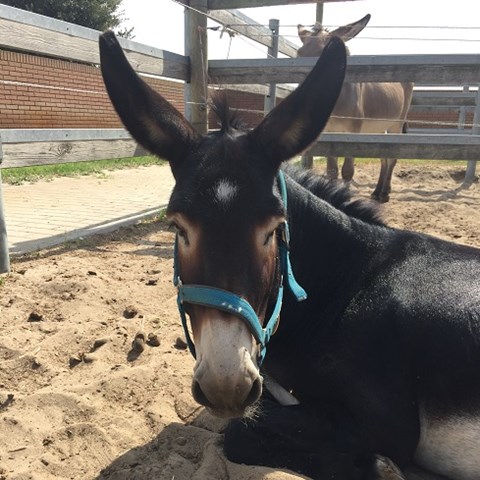Contact
Bodil Ström Holst
Senior Lecturer at the Department of Clinical Sciences; Division of Reproduction
Telephone: 018-671608
E-mail: bodil.strom-holst@slu.se

Sertoli cells produce anti-Müllerian hormone (AMH) and number of these cells is associated with numbers of sperm produced. The study aim was to quantify AMH concentrations in serum and seminal plasma of donkeys during puberty, and to correlate the values with those for testicular width and semen quality of sexually mature males.
Blood was collected from five donkeys every second month from 4 to 24 months of age, and then once at 40 months of age. Semen was collected once monthly, from 13 to 19 and 23–25 months of age. There was quantification of AMH concentrations in serum and seminal plasma.
During puberty, there was a redirection of AMH secretion from the blood stream into seminal plasma. In serum, AMH concentrations increased during puberty with a maximal concentration at 16 months and the changes were similar for seminal plasma with a maximal concentration at 18 months of age. Serum AMH concentrations from 14–20 were greater than at 12 or 22 months of age.
Maximal serum AMH concentrations were associated with testicular width at 24 months (r = 0.97, P = 0.005), but not with sperm count, sperm motility or percentage of sperm with normal morphology at 42 months of age.
There were no significant correlations among values for AMH concentrations in seminal plasma during puberty and values for any of the seminal variables.
https://authors.elsevier.com/a/1b7uG1M2wI94x8
Holst BS, Panzani D, Camillo F, Svensson A, Rota A. Anti-Müllerian hormone (AMH) concentrations are maximal at puberty in male donkeys and secretion is redirected from the blood stream to seminal plasma. Animal Reproduction Science, 2020 (218) 106484.
Bodil Ström Holst
Senior Lecturer at the Department of Clinical Sciences; Division of Reproduction
Telephone: 018-671608
E-mail: bodil.strom-holst@slu.se